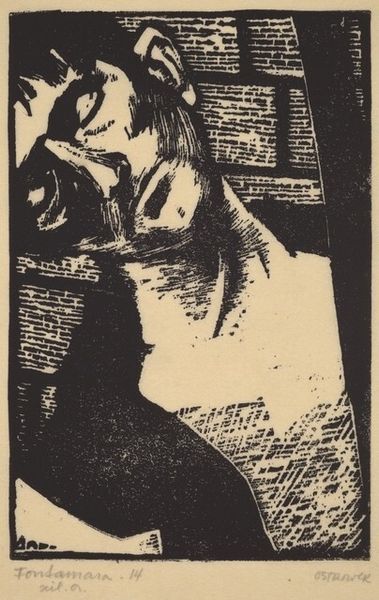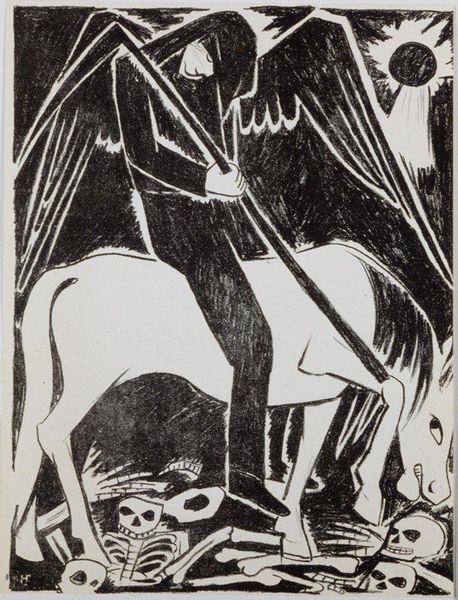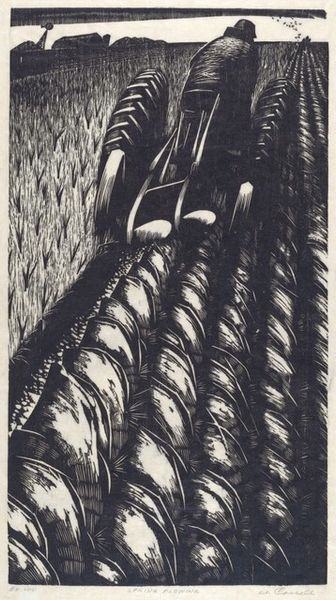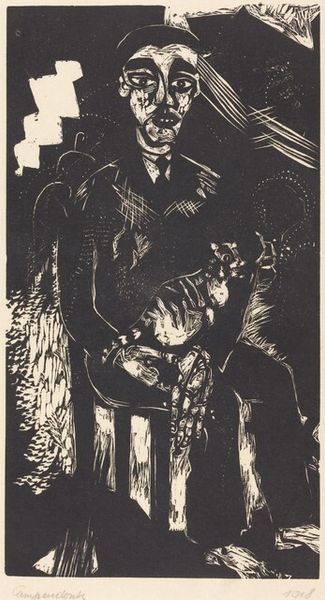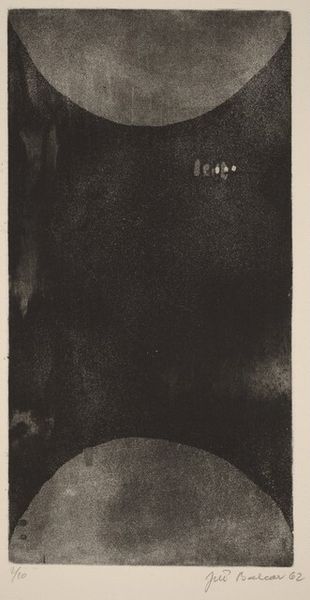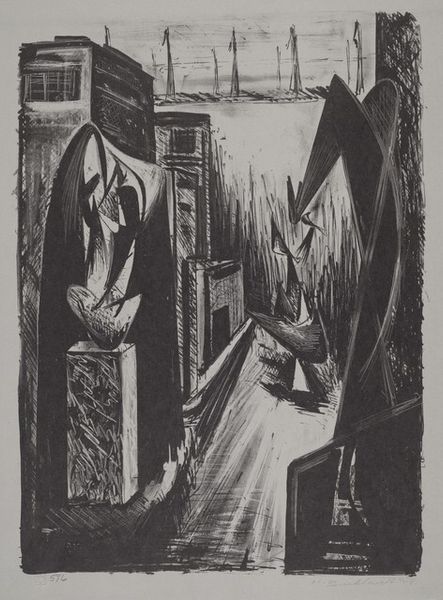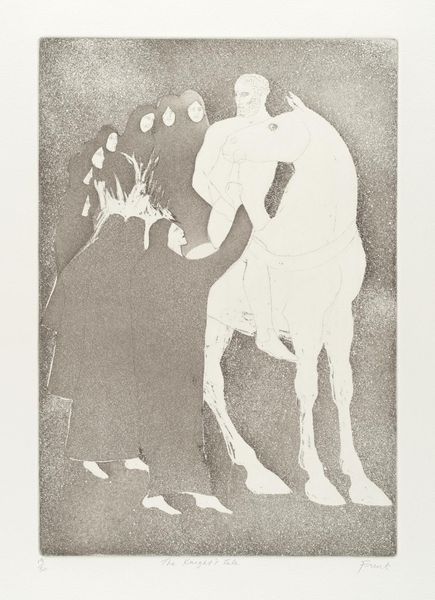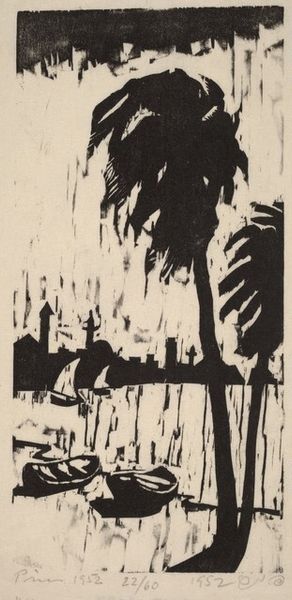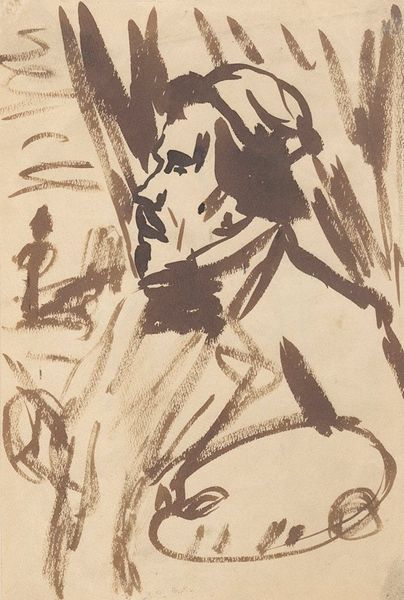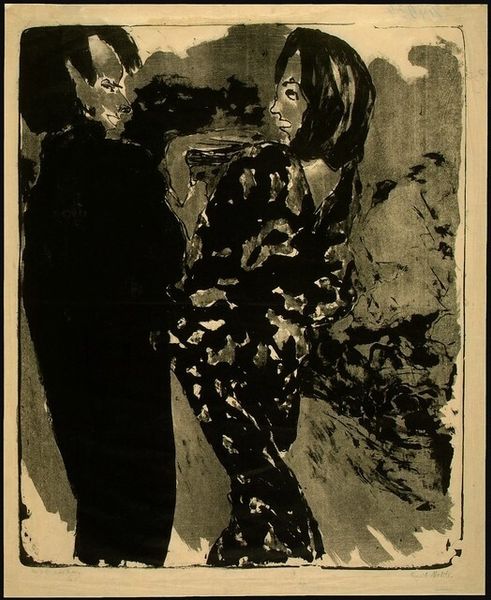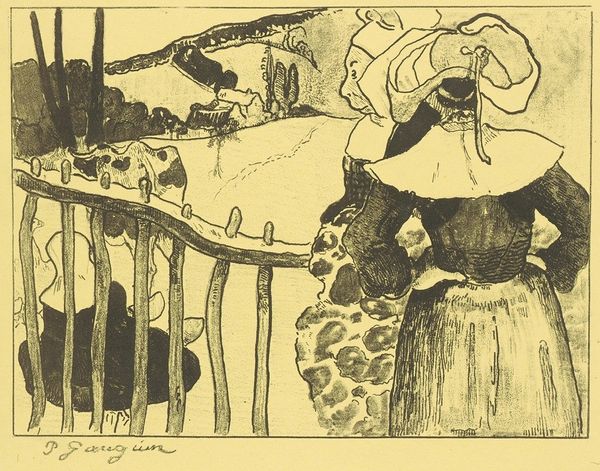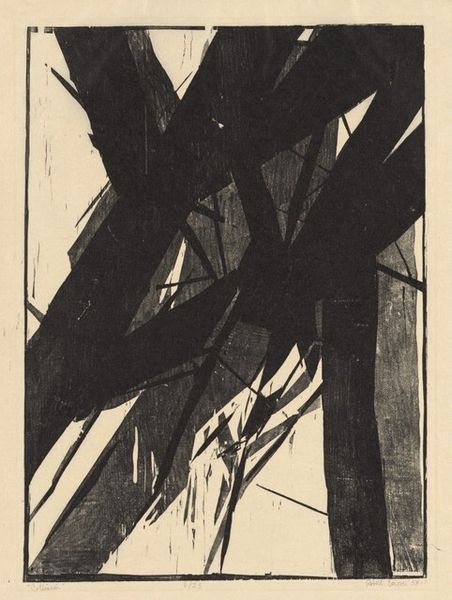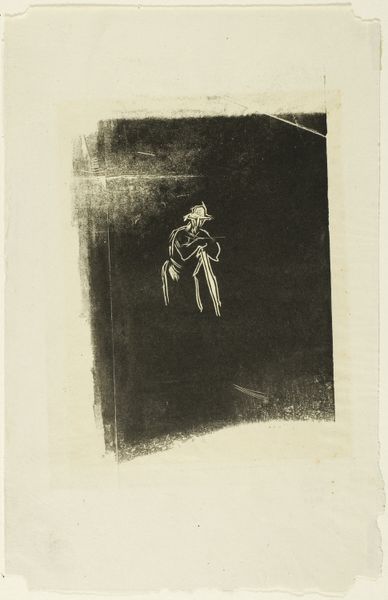
Copyright: Public Domain: Artvee
Curator: Henri de Toulouse-Lautrec created this lithograph titled "Ultime Ballade" in 1893. The piece, rendered in stark black and white, evokes a curious solitude. Editor: My immediate sense is of deep melancholy—almost Gothic in its stark contrast. The texture of the print itself is heavy. How was something so emotionally complex even created as a lithograph? Curator: That heavy mood is very carefully constructed. Lithography allowed Lautrec to achieve a very direct translation of his drawn line. It gives immediacy. Notice how the woman’s silhouette echoes traditional mourning dress, linking her image with cultural notions of grief and loss. And the architecture hints at some old sorrow too. Editor: Right, but look at that technique! See the way he's almost slashing through the stone with his tools? You can see every stroke; the labor is right there on the surface! It's far from some slick, industrially reproduced image; there is intentional craft on display here. Curator: That’s a great point! He exploits the capabilities of the print. Consider how the woman is positioned against the backdrop of that imposing church and somber cityscape. She becomes an emblem of a societal disquiet, of fleeting encounters and unresolved narratives within the urban landscape. The stark imagery almost strips her bare. Editor: It's also clear that the supplies played a crucial role. It looks almost improvised, which speaks to resourcefulness and the ingenuity involved in printmaking in the 1890s, especially for an artist capturing the fleeting world around them. These black inks and prepared stones—they weren't simply tools, but collaborators in creating that atmosphere. Curator: Precisely. It becomes a dance between subject and symbolic echo. That figure—nameless and faceless, becomes everyone in that position, marked and lost. The absence is the real focus. It’s a cultural study of Parisian sadness. Editor: I still fixate on that bold contrast and aggressive execution—it clashes so starkly with the perceived preciousness of "fine art." Lautrec is interrogating the materials, sure, but is also revealing something of his context too, the rise of modern, urban loneliness and the gritty process of art in that era. Curator: So, this isn’t simply a portrait, it’s a reflection of broader cultural narratives embedded within the symbolism of a figure draped in melancholic shadow. Editor: Yes, and a testament to how deeply entwined the artwork is with the tangible—ink, stone, labor, culture—and also, the lingering impact of the artist's touch.
Comments
No comments
Be the first to comment and join the conversation on the ultimate creative platform.
